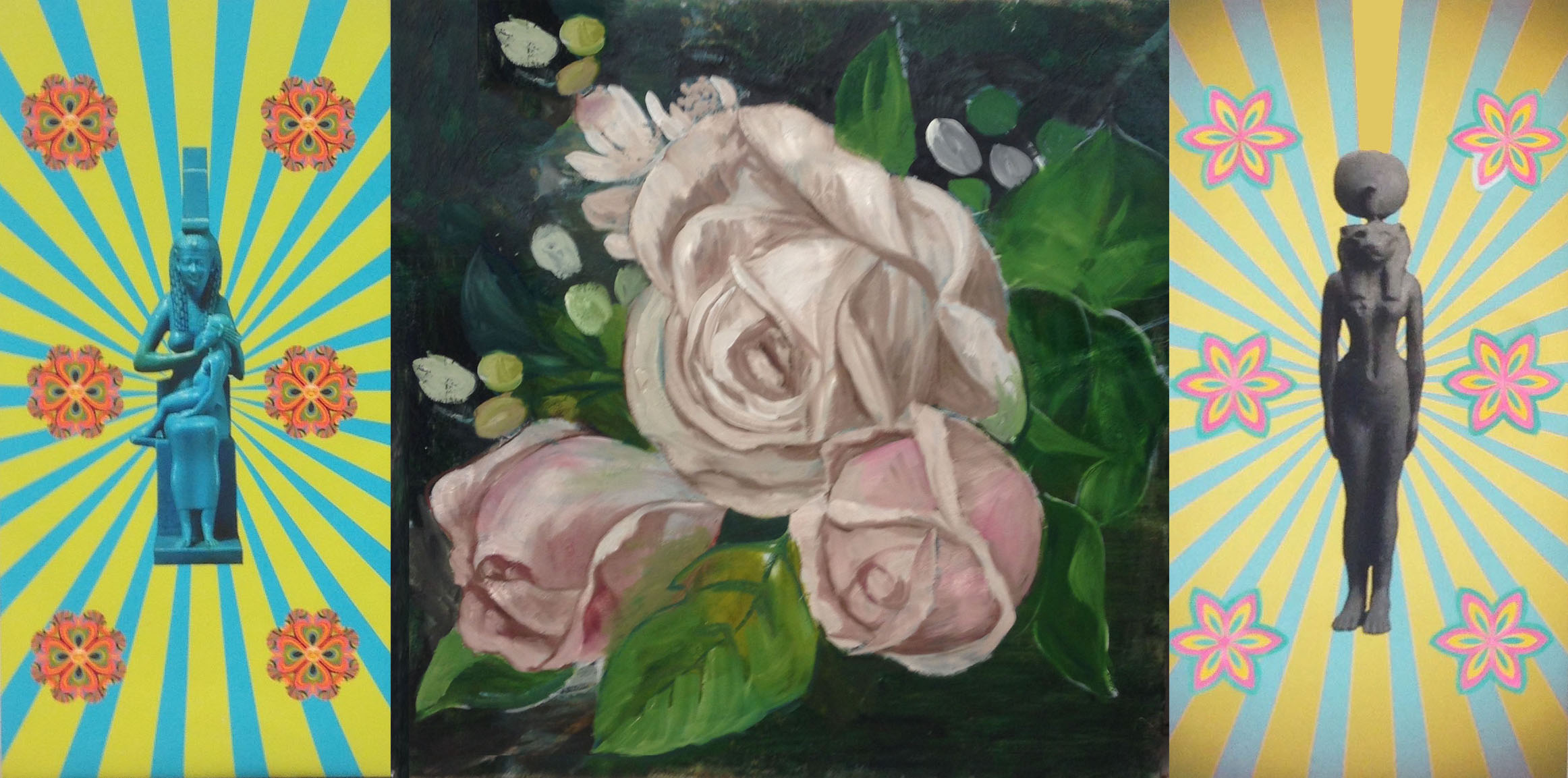



Echo Chamber, Wax, Hair, Glass, Oil, Perpex, Fabric, Metal, 17″ x 47″, 2017 Details
Obolisk, Video, 1:04, 2017

“And then…new economic relations will begin, completely ready and also calculated with mathematical accuracy, so that in an instant every possible question will disappear, simply because every possible answer will be had. Then the Crystal Palace will be built” This statement from the underground man in Fyodor Dostoevsky’s “Notes from the Underground”, expressed his analysis of the social climate of the 19th century where intellectual attempts at controlling behavior by logic could achieve a utopian state where everyone’s needs were met. During the Industrial Revolution, in place of religion, people turned to science and technology for a better life. Considering the idea of salvation through technology, I initially looked at the connection between the Industrial Revolution and the current technological revolution. Based on the novel, I forged a comparison with the underground man to social media users and the Crystal Palace to the internet. The underground man isolated himself from society and retreated into his own mind, finding solace in romantic literary fantasies, whilst the Crystal Palace, built during the Industrial Revolution, held the greatest exhibition of its time where people came from far and wide to see advancements in technology as well as art and science from around the world. The Great Exhibition allowed people to experience different cultures and ideas without leaving their own country and served as a forum to create images and narratives that reflected ideal selves. Today, the internet serves the same function. Our virtual avatars are created to attract “likes”, which in turn boost our sense of self. Closed loop algorithms keep us in a virtual mindset where our own beliefs and ideas are reinforced without any other viewpoint to counter them. Psychologist, Sherry Turkle, suggests the screen acts as a barrier, protecting us from being seen as we truly are. But there’s the rub. This scenario does not enhance intimacy. The cure for loneliness is being seen, not just being looked it.
This same stark sense of isolation is potent in my paintings : a lonely women gazes out, longing, and cold, solitary crystals float in remote, surreal spaces. A foreboding obelisk floats over a surreal landscape with acid chartreuse mountains dotted with tarot cards and religious icons. Beside it is a woman floating upside down, her outreached hand covered in a metal glove. I chose to paint the women in the Romantic style because this period served as escapism from the brutal conditions of the Industrial Revolution. Romanticism expressed a time when life was simpler, when people lived in the country and enjoyed a sense of community. With the rise of cities, factory employers experienced a complete change of pace from the village life, which was damaging to families and communities.Workers spent 14 hour days at work and came home with little energy to spend with their loved ones or engage with the traditional sense of a village community where families worked together as a unit of production. People became more isolated, giving more control over to the ruling class. For such a drastic transformation to a way of life must have been an underlying environment that allowed it to take place. As I researched more into my topic, I realized that there were sociopolitical machinations already in place that predated the Industrial Revolution that allowed our addiction to technology and ensuing isolation to take hold.
In her book, “Gerontologies”, Elizabeth Povinelli discussed Michel Foucault’s ideas about the role of biopower spawning in the age of the Industrial Revolution from late eighteenth and early nineteenth centuries. Biopower was a political system that managed human resources to gain power. Before that period, sovereign power was centralized by the king, where people abided by laws which were absolute. Coexisting with biopower and sovereign power, was disciplinary power which regulated behaviour through many mechanisms through institutions such as schools and prisons. These all reinforced social norms. According to Foucault, contemporary power models are designed to encode social scripts that determine behaviour and create the result of people tacitly complying with expectations of the social code. Certainly through the machinations of the various types of power, social roles were determined and maintained, whether they were in league with sovereignty, secular institutions or religion. It has become increasingly clear to me that the internet and social media cannot not only be seen as vehicles of alienation, but also as tools of capital and the state. This brought me back to the original Crystal Palace in the book which was a symbol of utopia where everyone’s needs are met, where the underground man fought against the idea of giving allegiance to social scripts. Hence, my newest body of work explores the relationship with power structures and technology and how they have brought us to a place where we are becoming increasingly isolated.